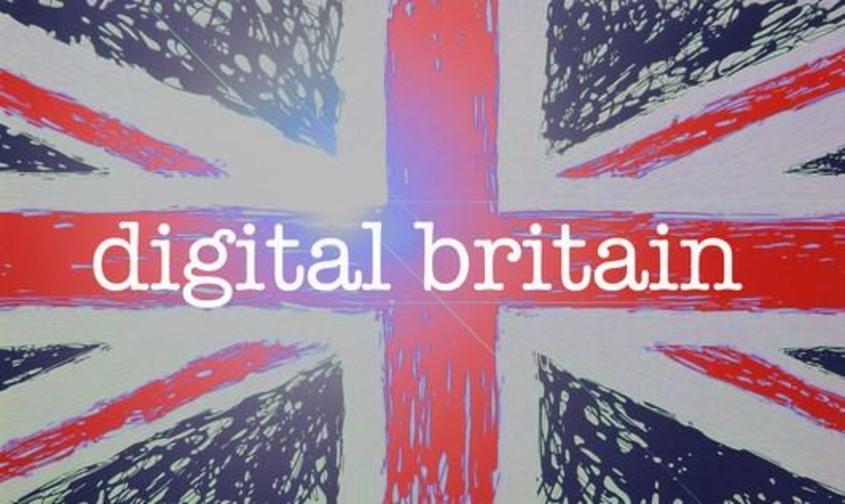Digital Britain Part Three close

The third part in our summary of the fascinating 175 page report by agency Dare, that takes a look at research from a variety of sources and gives a snapshot of how we, as Britons, behave digitally.
This month we look at spending, watching, listening and reading behaviours online.
Spending
Online retail has grown phenomenally over the last decade with over 40% of Brits now shopping online every week(!) constituting a massive £68bn in 2011. Crucially, two in three people have made a first purchase from a brand as a result of an online experience. Which means that brands who consider themselves to be only relevant in the offline world, are missing a trick. OK, maybe you won’t drive online sales through your site (if you sell yachts, chances are people are going to want to see what they are buying first, conversely if you sell baked beans, people are probably not going to bother with mail order), but you have to get your house in order online if you want to influence people at the various stages of the purchasing process.
Buyers online fit into four categories and brands need to tailor their messaging based on how their customers fit:
1. Casual shoppers – 24%. Who use the internet a lot for a variety of things, shopping be just one of many. They can’t be bothered with price comparisons or peer-generated reviews particularly. They will read professional reviews for high-value purchases, but won’t ever submit their own reviews for products.
2. Bargain hunters – 28%. They shop regularly online and use the internet to find the best deals around: either via comparison websites or cashback services. They read reviews and submit them, too. They’re probably likely to be critical of offers that appear to be good value, but turn out to be ‘you get what you pay for’.
3. Avid internet users – 14%. These people are online a lot but don’t have the funds to be able to do much spending and so don’t buy very often. This group are most likely to leave reviews and use cashback or vouchers. They are more likely than any other group to use money-saving and comparison websites. I guess this is why so many of adverts for this type of service appears during the daytime.
4. Apathetic shoppers – 34%. Probably this is your mum: doesn’t use the internet to research products, or get the best price and certainly rarely will they actually purchase anything. This group prefer to get their information in the real world and trust their own instincts rather than peer reviews.
The big 3 places for shopping online in the UK are eBay, Amazon and Tesco and people are most likely to buy at 4pm on Wednesday.
What really matters online?
What are the key things that influence purchasing? There are a few:
1. Brands matter. One of the issues about shopping online is there is just so much information. Not only that, but it’s unstructured and varies in its reliability. So, brands act as short-cuts for people looking to reassure themselves that the product is worth parting with their hard-earned cash for.
2. Does your mate like it? The vast majority (90%) of people seek advice from friends and family before making serious purchases. Online advocacy is a challenge and an opportunity for brands to take on.
3. Its social, stupid. As search and social come together, we’ll see more results being based on whether your friends like something. Combining personal influence with the popularity of a brand is a combination that makes sense to consumers. If a million people I don’t know rate this brand and several of my friends do, who am I to argue?
4. Reviews. People are still searching for reviews and there are a lot to choose from. Consider that the future is mobile and we already know that people don’t have a long attention span when it comes to search online, it means that influencing the most popular reviews will be important. People don’t know which reviews to trust or how to cut through the massive amount of information. It makes sites like theranktank.com, seem like a sensible resource.
Watching stuff online
TV is still the main place where people watch longer content such as TV shows and movies, however this pattern is changing as you would expect. After TV, tablets (of which 97% are currently iPads) are the biggest platform for watching long-form content, with 30% more videos being watched than on desk-top computers and 100% more videos watched all the way through.
Most of the content watched online is still YouTube type video content, but it is closely followed by music videos, full-length TV shows and movies.
Time-shifting. Nearly 1 in 3 people watch TV on demand, ie at times other than when it was broadcast. This trend is only set to increase as online TV becomes easier to access and more mainstream.
Apps are just around the corner. The new ways in which we consume entertainment will be via apps. The iPlayer is, after all, an app. This means that the type of content will evolve too. It won’t be long until we might have a "TV Channel".